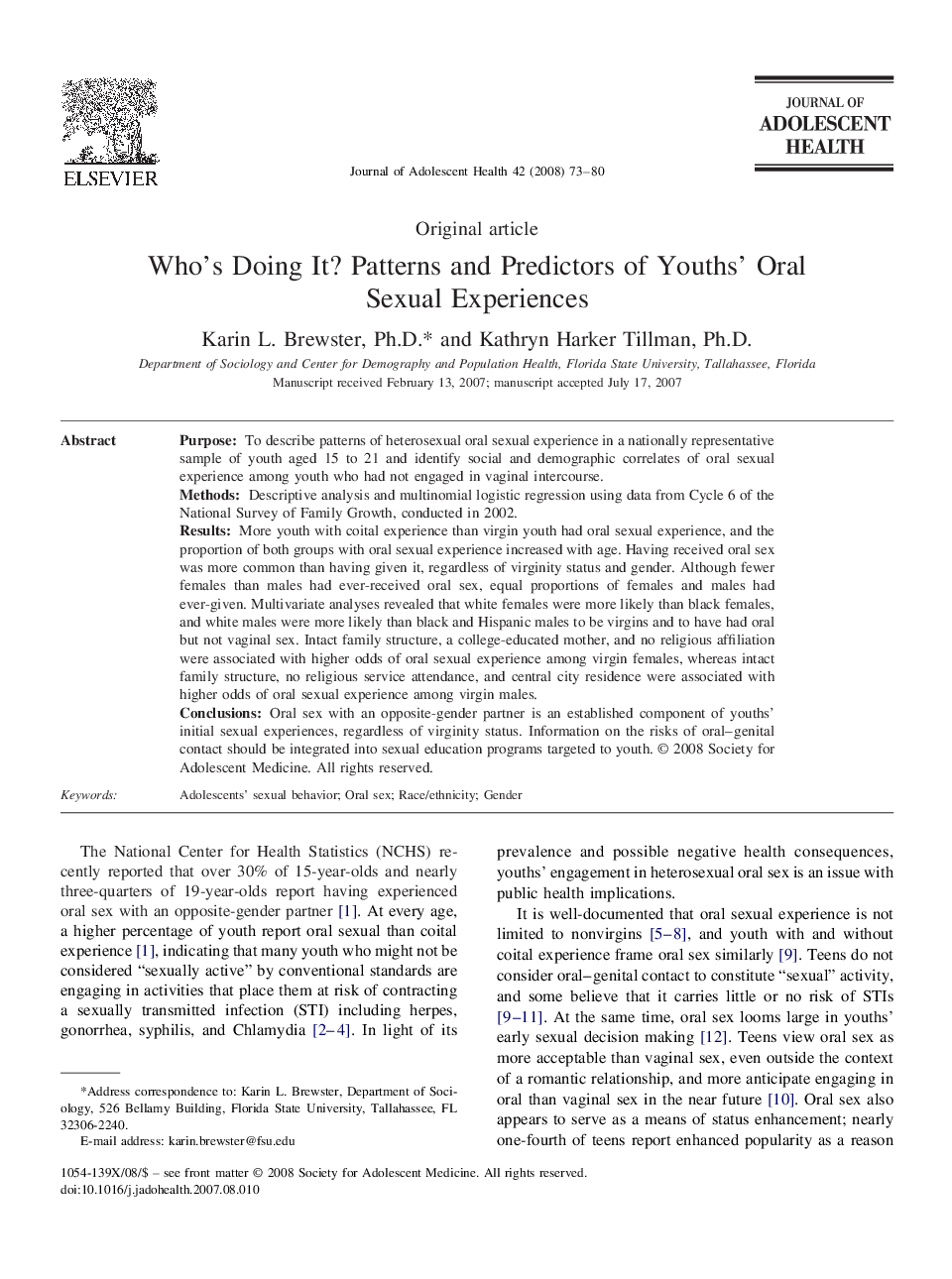| Article ID | Journal | Published Year | Pages | File Type |
|---|---|---|---|---|
| 1080628 | Journal of Adolescent Health | 2008 | 8 Pages |
PurposeTo describe patterns of heterosexual oral sexual experience in a nationally representative sample of youth aged 15 to 21 and identify social and demographic correlates of oral sexual experience among youth who had not engaged in vaginal intercourse.MethodsDescriptive analysis and multinomial logistic regression using data from Cycle 6 of the National Survey of Family Growth, conducted in 2002.ResultsMore youth with coital experience than virgin youth had oral sexual experience, and the proportion of both groups with oral sexual experience increased with age. Having received oral sex was more common than having given it, regardless of virginity status and gender. Although fewer females than males had ever-received oral sex, equal proportions of females and males had ever-given. Multivariate analyses revealed that white females were more likely than black females, and white males were more likely than black and Hispanic males to be virgins and to have had oral but not vaginal sex. Intact family structure, a college-educated mother, and no religious affiliation were associated with higher odds of oral sexual experience among virgin females, whereas intact family structure, no religious service attendance, and central city residence were associated with higher odds of oral sexual experience among virgin males.ConclusionsOral sex with an opposite-gender partner is an established component of youths’ initial sexual experiences, regardless of virginity status. Information on the risks of oral–genital contact should be integrated into sexual education programs targeted to youth.
